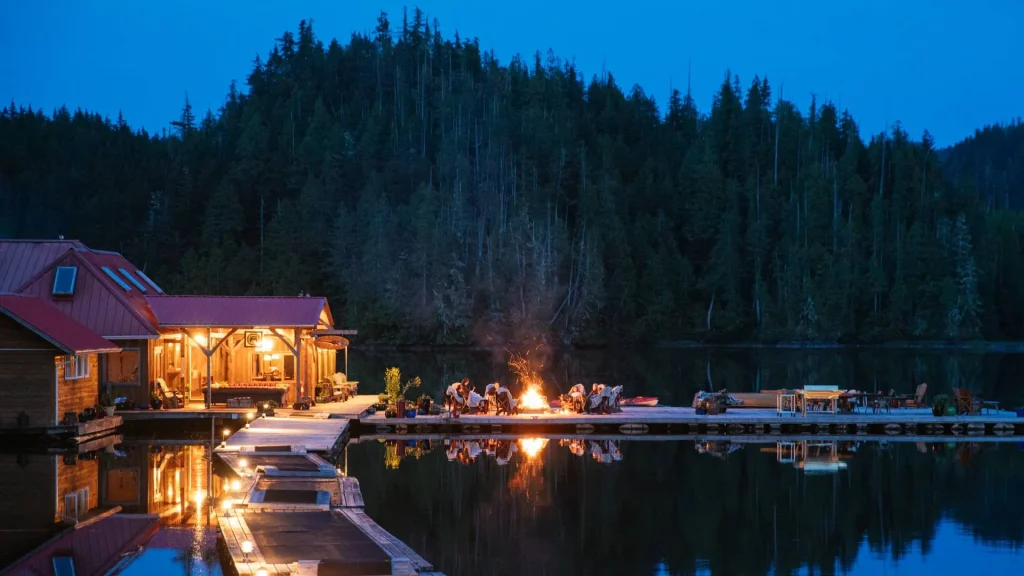Ask yourself: why are you booking yet another flight to your favorite destination? Why are you keen to check another country off your must-see bucket list? Most people travel for the local culture and the unique sights and sounds along the way—so visiting these well-loved spots sustainably and respectfully that allows both the local population and our children and grandchildren to continue to enjoy them isn’t just a theoretical ideal. Being a genuinely eco-conscious traveler is necessary if we want to continue being able to see and experience the world for generations to come.
“Most of us first became aware of sustainability when we learned that by picking up our towel off the hotel’s bathroom floor, we would single-handedly save the Amazon rainforest. It didn’t quite work out that way, as nice as it sounded,” says Justin Smith, president of The Evolved Traveler. “Greenwashing, as it is known, still exists today, in more subtle forms and usually as marketing gimmicks. Unfortunately, public perception about sustainability hasn’t progressed much past this, despite an increasing number of travelers eagerly looking to incorporate these practices into their journeys.”

According to Smith, environmental impact is one of three core pillars of sustainable tourism and certainly the most recognizable. That said, two other equally important pillars are protecting cultural heritage and maximizing benefits to the local economy. Taking the three elements into account, the core of sustainable tourism is drilled down to acting and treating the people and places we visit with respect, the same way we expect others to act when they tour our homes and communities. It is effectively the practice of “do no harm” and leave the destination as you found it, if not better, for those that come after. Smith suggests taking the following questions into account when planning a sustainably-minded trip abroad:
- Are our accommodations utilizing sustainability practices such as water and energy conservation? Are they using sustainable materials versus single-use items when and where possible?
- Is it possible to use alternate means of transportation such as trains, buses, or biking?
- Are we supporting the local community and economy by patronizing local-owned restaurants and stores?
- Do the airlines, hotels, and tour operators we travel with provide the opportunity to carbon offset?
- If we visit indigenous people or groups, are we respectful of them and their culture? Did they participate in the criteria and planning of tourism to their towns, villages, or homes?

Sustainability and eco-friendly travel can be hard to get right at first—but it does need to be fundamental to travel going forward and, in many ways, should be considered crucial. The reality is sustainable tourism is common sense stuff. Vacations should never be work or come with a to-do list, and certain tricks will ensure you’re doing the most to ensure your travel will be beneficial to all concerned—not just you or the local population but for the environment as well.
Go Slow
Heather Magnussen, responsible travel and sustainability manager at Audley Travel, says that changing your schedule is one of the easiest ways to foster a more eco-friendly trip—especially if you have the luxury of time. This can be done by adopting a slower approach to travel and spending more time in fewer locations. “Travelers should look for low emission tours such as walking tours and consider greener options like train and boat journeys instead of internal flights,” says Magnussen. “When flights are necessary, travelers should check if the operator/airline offers the chance to offset the trip’s carbon emissions.”

Research Sustainable Accommodations
If you are in the early stages of deciding where to vacation and haven’t yet chosen a destination, Magnussen suggests looking at the sustainability practices in your shortlist. For example, does the goal have an effective recycling scheme, lead the way in wildlife conservation, or use profits from tourism to provide community support? Do the hotels/tour operators offer reusable water bottles and provide filling stations? Many destinations worldwide—from eco-lodges to city hotels—have begun implementing sustainability commitments and goals that go far beyond picking your towels up off the bathroom floor.

Reconsider Your Travel Dates and Avoid Peak-Season Travel
“Many destinations see a massive spike in visitors during certain months, for example, when the weather is warmer and drier or when there’s a specific seasonal reason for visiting, putting a strain on resources,” explains Magnussen. “Visiting at alternative times of the year means fewer crowds and shorter waiting times, and for trips such as a safari, gives the experience of seeing the wildlife in the green season. Traveling out of peak times also helps provide local people year-round jobs.”
Carefully Consider Any Animal Experiences
Animal experiences tend not to be the most ethical or sustainable, but there are certain countries and excursions that work with animals in a cruelty-free fashion and help stimulate the local economy–and those are the ones worth seeking out. “Always look at the animal welfare policy of the operator or excursion, and if there isn’t one, then this should be a warning sign,” explains Magnussen. “Only consider experiences where the visit won’t have a detrimental impact on the individual animals, or a species as a whole.”
Ensure Your Visit Will Have a Positive Impact on the Community
According to Magnussen, while exploring a new destination, travelers should always observe the local cultural sensitivities, avoid taking photographs of children, and ask permission before taking photos of any adults. “Where possible, shop locally and eat in locally-owned and community-run bars and restaurants to ensure the money spent benefits the local people,” she adds.

Pack Carefully and With Plastic Reduction in Mind
“Take water bottles (ideally double insulated ones for the added benefit of keeping drinks cold) to refill at hotels or refill stations found via apps and websites like Refill My Bottle and Refill Not Landfill,” suggests Magnussen. Packing a reusable coffee cup and a reusable cutlery set, or spork, further reduces plastic consumption when eating and drinking away from hotels and restaurants, and a reusable shopping bag is helpful when purchasing souvenirs.
Magnussen also suggests recycling any packaging at home before traveling and choosing travel soap and shampoo bars which also reduce plastic waste. “It is easier to reduce plastic usage in some countries than others, but in all destinations, I recommend asking for drinks without straws when ordering in bars and restaurants,” she says.
Eco-friendly Hotels and Resorts to Consider
Playa Cativo Eco Lodge in Golfo Dulce, Costa Rica
Playa Cativo Eco Lodge is nestled among lush tropical rainforests and boasts nearly 100 percent clean electric energy production, an on-site organic farm where vegetables, medicinal plants, and ingredients are planted and harvested to be used in the kitchen and bar, and also works with the adjacent Piedras Blancas National Park to protect the land and the biodiversity in Golfo Dulce. The main lodge and private cabins are also made from 80 percent biodegradable or reusable material.
Nimmo Bay in Great Bear Rainforest, British Columbia
Nimmo Bay has had sustainability at the heart of operations since the 1980s. One of the biggest and best examples of its eco-friendly practices is the hydropower system, which was installed in the early eighties and has been powering Nimmo Bay with clean, green power ever since. The property’s next steps include phasing out the use of diesel power and shifting to electric motors on the boats, providing employees with educational opportunities and avenues for community engagement, increasing the number of locally hired indigenous team members, and continuing to source all products—from food to bedding and everything in-between—as locally and ethically as possible.
Mangrove Beach Resort in Willemstad, Curaçao
Mangrove Beach Resort aims to bring awareness about the importance of contributing to a healthy and sustainable environment not just on the resort—but also on the island of Curaçao. The all-inclusive resort leads the way in terms of sustainable resort culture. It features innovative and eco-friendly initiatives such as using osmosis technology to transform seawater into clean and drinkable water, donating food leftovers to local farmers, purchasing products and ingredients from said farmers, utilizing solar energy, and sending kitchen oil waste to facilities with environmental permits to transform the oil into sustainable aviation fuel (SAF).






